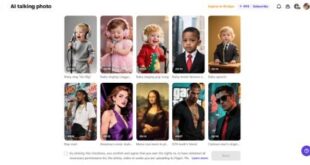Many organizations today see diversity, equity and inclusion (DEI) as a cornerstone of their growth and resilience. It is no longer limited to statements on careers pages, annual training modules or headline metrics in ESG reports. In digital organizations where talent, product and customer experience are tightly linked, DEI can be a powerful driver of innovation and competitive advantage.
By translating aspirational statements into measurable practices, accountable leadership and everyday workflows, organizations can create workplaces that are not only fairer but also stronger, more agile and more successful.
Why DEI Must Move Beyond Policy
There is a growing body of evidence that diverse leadership correlates with better business outcomes. Firms in the top quartile for both gender and ethnic diversity on executive teams show materially higher odds of financial outperformance. This relationship has been explored in recent McKinsey research and reinforced by follow-up studies that link diverse leadership to stronger profitability and innovation.
At the same time, DEI is a talent magnet. The majority of job-seekers and employees say workplace diversity is an important factor when choosing employers. This means that a gap between rhetoric and reality directly affects recruitment and retention in markets where digital skills are scarce.
The landscape is also volatile. In 2024 and 2025 a number of prominent organizations reassessed or scaled back publicly stated DEI commitments amid political and legal pressures. These reversals show how fragile surface-level DEI can be if it is not embedded into governance, metrics and culture. Leaders must treat these events as a warning. DEI that is seen as performative is the easiest to reverse.
Put Measurement And Accountability At The Centre
Policy without measurement is opinion. Companies that have shifted DEI from policy into practice consistently define a small set of outcome metrics, instrument those metrics in existing systems and attach clear accountability to leaders’ goals.
Start with a tight measurement set. This can include representation by level and function, pay-equity gaps, hiring and turnover rates for underrepresented groups and qualitative measures such as employee inclusion scores from pulse surveys. These indicators should be integrated into regular management dashboards rather than siloed in HR so senior leaders see DEI alongside revenue, churn and product KPIs.
Metrics must also be tied to performance conversations and planning cycles. When promotion and compensation committees review talent, they should be explicitly asked to account for diversity and inclusion implications. This creates durable incentives. Without it, DEI remains a side project.
Build DEI Into The Talent Lifecycle And The Product Lifecycle
Operational DEI treats every HR and product process as an opportunity to reduce bias and expand access.
On the talent side, organizations should standardize job descriptions to remove exclusionary language, adopt structured interviews to reduce subjective bias, broaden recruiting channels beyond traditional pipelines and establish sponsorship programs to accelerate representation into leadership. These changes should be paired with anonymized resume screening and blind assessment where applicable to reduce downstream bias.
On the product side, decisions carry real-world social consequences. Diverse product teams and explicit inclusive design practices reduce the risk of biased models, narrow testing and exclusionary user experiences. Operationalizing DEI in product development means adding representation checks into product acceptance criteria, including diverse user personas in testing roadmaps and subjecting models and data pipelines to fairness and impact assessments.
Invest In Managers As The Cultural Multiplier
Managers are the point of contact where policy becomes experience. Empirical data shows that declines in everyday inclusive behaviors such as managers encouraging respectful dialogue or offering career development tailored to underrepresented groups are early warning signs of backsliding. Training alone will not fix that problem. Managers need tools, time and incentives to lead inclusively.
Practical steps include adding inclusion-related behaviors to manager scorecards, calibrating talent reviews to surface potential bias and creating peer-learning forums for managers to share strategies that work in practice. When managers are accountable and supported, inclusive behaviors scale far faster than any single HR program.
Make Measurement Rigorous And Invest In Analytics
One of the biggest barriers to sustaining DEI is weak measurement. Organizations often lack the instrumentation to connect interventions to outcomes. Sophisticated analytics, from cohort-level retention models to causal analysis of hiring interventions, allow leaders to invest in what works and retire what does not.
Leaders should prioritize data hygiene, build pipelines to combine HR and business metrics and create clear hypotheses to test for each intervention. This is the same rigour product that engineering teams use to optimize features. Applying it to DEI converts well-intentioned programs into repeatable impact.
Design For Resilience With Governance That Survives Headwins
Recent corporate retrenchments of public DEI commitments underscore the need for resilient governance structures. Organizations should embed DEI into board-level oversight, governance charters, risk registers and long-term strategy documents. This prevents DEI from being treated solely as a human-resources initiative that can be reversed in a quarter. Policies that are codified into operational processes such as hiring rubrics, supplier diversity requirements, procurement criteria and product quality-assurance gates are much harder to dismantle.
Publicly stated goals are useful only when paired with transparent reporting and external benchmarks. Sharing progress, setbacks and learnings with stakeholders such as employees, customers and investors builds credibility and preserves trust when the external environment becomes challenging.
Start Small And Scale What Works
Leaders often ask whether to pursue sweeping transformation or targeted pilots. The answer is both. Organizations should run tightly scoped pilots with clear metrics, for example a diverse-slate hiring rule for two engineering teams, and at the same time invest in enterprise-level changes such as manager scorecards and analytics. Pilots can generate evidence before scaling. The same product-minded experimentation that reduces product risk applies to DEI investments.
In conclusion, shifting DEI from policy to practice requires three interlocking commitments. Leaders must be accountable. Metrics must be treated as core business signals. Operational changes must weave inclusivity into routine decision-making.
In digital organizations where talent and product are the engine of value, embedding DEI is not a moral add-on. It is a strategic capability that drives innovation, resilience and market relevance. Leaders who approach DEI with the same discipline they apply to product roadmaps and financial targets will find that what begins as a set of policies becomes a competitive advantage. This advantage endures because it is baked into the way the organization works every day.
 Newspatrolling.com News cum Content Syndication Portal Online
Newspatrolling.com News cum Content Syndication Portal Online






